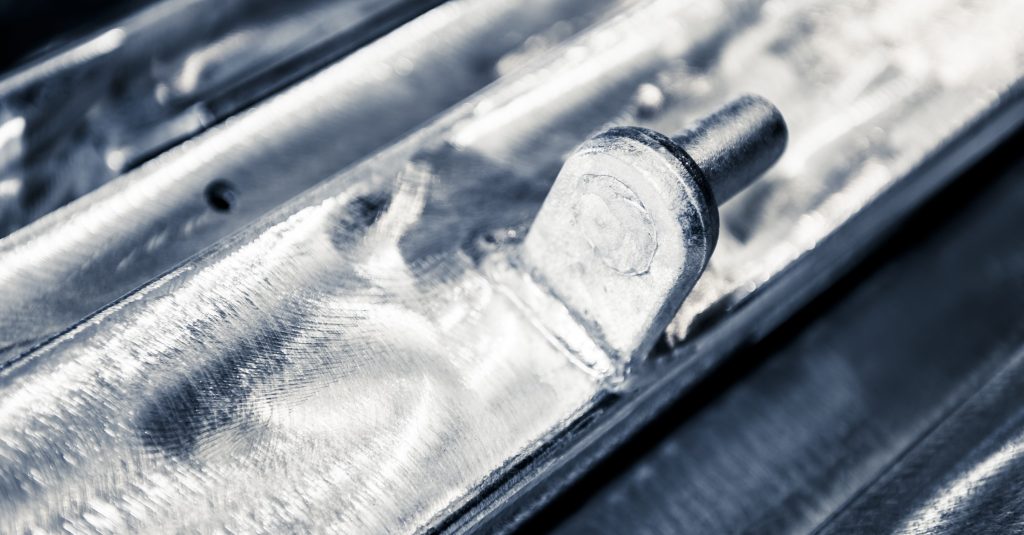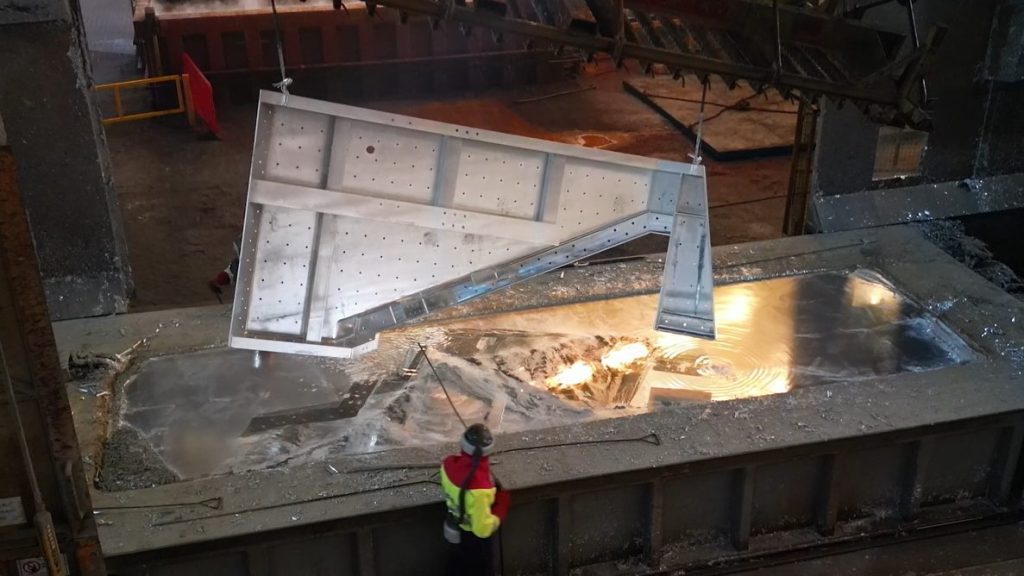What is cathodic protection?
Cathodic protection helps prevent corrosion on a metal surface. We explain in detail what cathodic protection is, its different types, and the benefits of cathodic protection for steel, especially in the context of hot dip galvanizing.

Cathodic protection explained
Each type of metal has an different electric potential, or the amount of potential electricity it can hold. When two different types of metal come together, provided they have dissimilar potential, the metal with more electro-negative potential will “sacrifice” itself and corrode before the metal with less electro-negative potential.
There are two types of cathodic protection. One is achieved by supplying a direct current (DC) from an external source, known as impressed current cathodic protection. The other makes use of sacrificial anodes, known as galvanic anode or sacrificial anode cathodic protection.
Benefits of cathodic protection
By preventing corrosion, cathodic protection extends the lifespan of metal structures, reducing the amount of replacements or repairs needed. This helps to save time and money on refabrication.
The extended lifespan given to the steel also means that it becomes a more sustainable solution than steel without cathodic protection, by reducing emissions associated with transport and refabrication.
Cathodic protection also helps to make vital steel fabrications such as structural steel more safe to use. Corrosion poses a significant threat to steel which can, in turn, create serious safety hazards. The extended lifespan given by cathodic protection helps to ensure that the steel remains reliably safer to use for longer and saves on downtime associated with maintenance.
Galvanizing provides cathodic protection
The hot dip galvanizing process provides galvanic anode cathodic protection for steel. The fabrication is dipped into a bath of molten zinc, causing a reaction that makes the zinc bond to the underlying steel. This occurs because zinc has more electro-negative potential than iron, causing the zinc to corrode first.
The cathodic protection provided through galvanizing means that it is a much more effective and long-lasting coating method than alternatives such as paint.

A high quality coating
Although hot dip galvanizing is very effective at corrosion protection, it’s important to choose the right galvanizing company for the job.
A bad quality job may result in an uneven coating thickness, which can cause a quicker rate of corrosion than a coating with the same thickness throughout. Spikes on an uneven coating could also cause a potential safety hazard. An uneven coating also may not look as nice, which may be important to you depending on its use. A high-quality galvanizing company will ensure the galvanized finish looks smooth, shiny, and aesthetically appealing.
When you choose Joseph Ash Galvanizing, you will be working with a company that cares about quality and takes care of the process from start to finish.
- We’ll collect and deliver your steel to our site ✔️
- Comprehensive technical support, guidance and assistance at every stage ✔️
- Fast turnaround times ✔️
- Hot dip galvanized to BS EN ISO 1461 standards ✔️
- Part of a circular economy ✔️